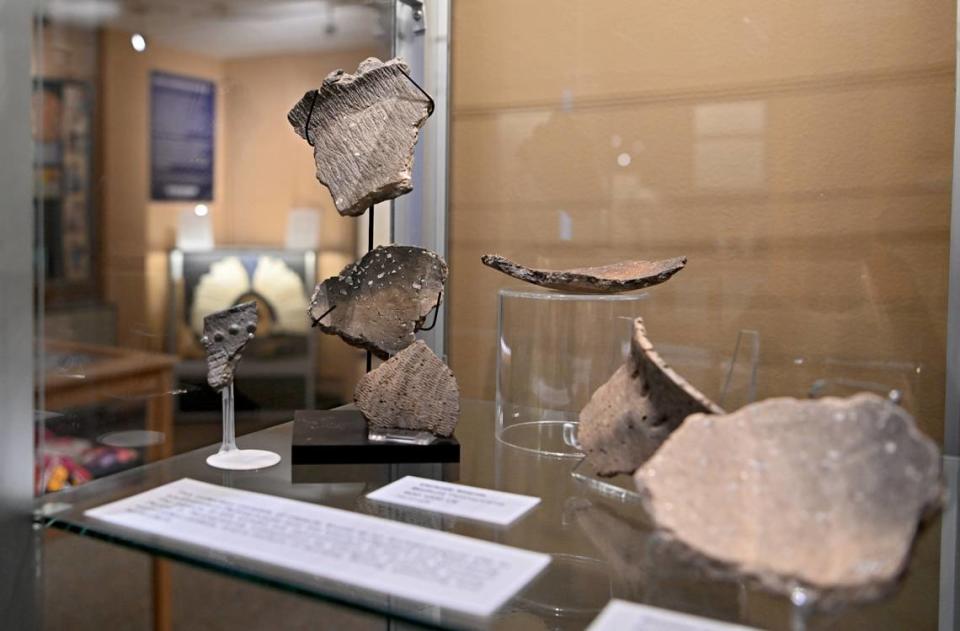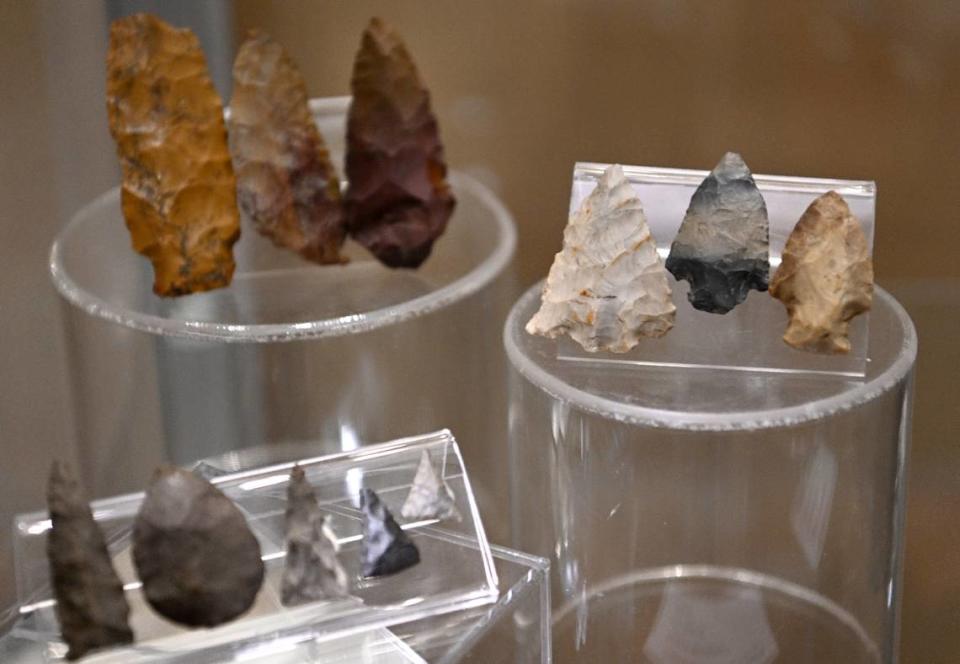Penn State is working to return Native American remains. Where else are they stored in PA?
More than three decades after landmark legislation became law, Penn State is taking steps to return most of the Native American remains claimed by the university.
Penn State’s Matson Museum of Anthropology has preliminary plans in place with at least a half-dozen tribes to return the ancestral remains of nearly 50 people this year.
The renewed emphasis comes as more institutions across the country attempt to comply with the Native American Graves Protection and Reparation Act (NAGPRA), which requires federal agencies and institutions that receive federal funds to repatriate or transfer Native American human remains and cultural items to their rightful owners.
Penn State is far from the only institution working toward compliance with NAGPRA. Here’s a look at how the university stacks up to its peers in the Big Ten conference and across the Keystone State.
A look at Pennsylvania institutions
Twenty-one institutions located in Pennsylvania have reported possessing Native American remains taken from across the country, according to a database published by ProPublica in December. Many of them are federally funded museums and universities, including Penn State’s anthropology museum.
Penn State itself possesses at least 56 sets of Indigenous remains from outside of Pennsylvania, ProPublica’s database reported using data tracked and recorded by the National Park Service. At least 18 of them have been made available for return, signifying the university published a list of the tribes that are eligible to make a repatriation claim. Once remains are made available for return, physical transfers can occur, though strict regulations can lengthen that process.
Federal law does not require institutions to report when physical transfers of remains were completed, ProPublica said, which can cloud the accuracy of the nonprofit newsroom’s count of remains made available for return.
According to ProPublica’s database, no Pennsylvania institution possesses more Native American remains taken from across the country than the State Museum of Pennsylvania. The Harrisburg-based museum had at least 1,085 sets of remains under its belt as of December and, at that point, had made only 177 sets, or 16%, available for return.
The Carnegie Museum of Natural History possessed the second-most with 751 sets of Indigenous remains and made just 104 available for return. The University of Pennsylvania’s Museum of Archaeology and Anthropology ranked third with 632 sets of Native American remains, but made 228, or 36%, available for return.
Of the 21 Pennsylvania institutions listed, seven had made their entire collection of remains available for return. The U.S. Department of the Interior led the way with 42 sets, followed by others across the commonwealth, including Kutztown University (21), the Wistar Institute (4) and Bryn Mawr College (3).
Conversely, ProPublica’s database also organized a group of 26 institutions from across the country that reported possessing Native American remains that were taken from within Pennsylvania. Once again, the State Museum of Pennsylvania led the pack by possessing 1,030 sets of Indigenous remains from what is now the commonwealth, representing nearly all of the museum’s collection. The Carnegie Museum of Natural History (591 sets) and the California University of Pennsylvania (183 sets) round out the top of the list.
‘A somber undertaking’: Penn State renews efforts to return Native American remains
Comparing to Big Ten peers
A collection of ancestral remains like Penn State’s is not uncommon throughout the Big Ten, the 14-member conference of major research universities spread throughout much of the Midwest and mid-Atlantic.
At least 10 Big Ten schools possessed the ancestral remains of at least one Native American as of December, according to ProPublica’s database. No institution possessed more than Indiana University Bloomington, which once possessed a collection of nearly 6,000 total remains — the fifth-largest in the country. The University of Nebraska State Museum, which is situated on the university’s flagship campus in Lincoln, previously held more than 2,000 sets of remains.
Half of Penn State’s conference peers have already made the majority of their collections available for return, ProPublica reports. As of December, Michigan State had made all but one of its 525 sets of remains available for return, leading the Big Ten. Meanwhile, Iowa, Nebraska and Wisconsin have already made at least 90% of their respective collections available for return.
While Indiana had designated more than 1,000 sets of remains as available for return, more than 80% of the school’s total collection remained unavailable as of December.
ProPublica’s database said figures were unavailable for four Big Ten member institutions: Northwestern University, University of Maryland College Park, Ohio State University and University of Minnesota, Twin Cities.
UK one of largest holders of Native American remains that haven’t been returned to tribes
What to know about NAGPRA
Movements to return Native American remains, funerary objects and cultural items to their rightful owners are largely grounded through the NAGPRA, which Congress passed in 1990. In addition to requiring the repatriation or transfer of Native American remains, the act requires federal institutions to do so by consulting with Indigenous populations, properly identifying and reporting remains and cultural items in inventories and collections and executing repatriation processes with caution.
Shortly after NAGPRA’s passage, the Congressional Budget Office estimated it would take roughly 10 years to repatriate applicable objects and remains to Native American tribes. That process has drawn out for three decades and counting due to, in part, murky regulations and a lack of institutional will, ProPublica reported in a December investigation.
To comply with NAGPRA, museums, federal agencies and organizations receiving federal funds are required to evaluate their collections for Native American remains and cultural items. Applicable bodies must also provide public notice before repatriating or transferring items.
Failure to comply with NAGPRA can have wide-ranging impacts for these institutions, occasionally including criminal prosecution if they sell or profit from Native American human remains or cultural items that were obtained in violation of the act. Noncompliance could also result in civil penalties.
Additionally, noncompliance could prevent institutions from receiving federal grants that aim to assist in consultation, documentation and repatriation processes through NAGPRA.
NPS maintains its own online databases and publishes regular reports regarding NAGPRA compliance across the country. More information is available online at nps.gov/subjects/nagpra.


